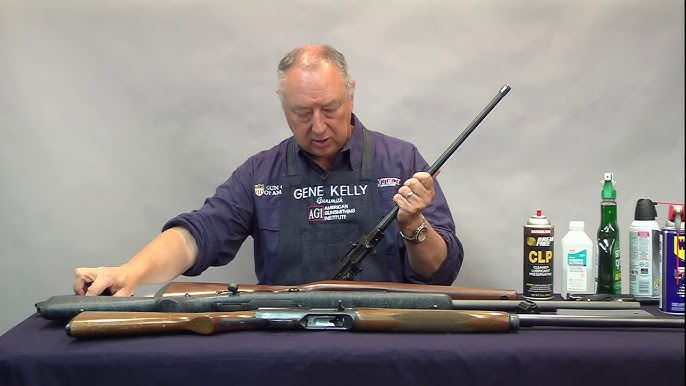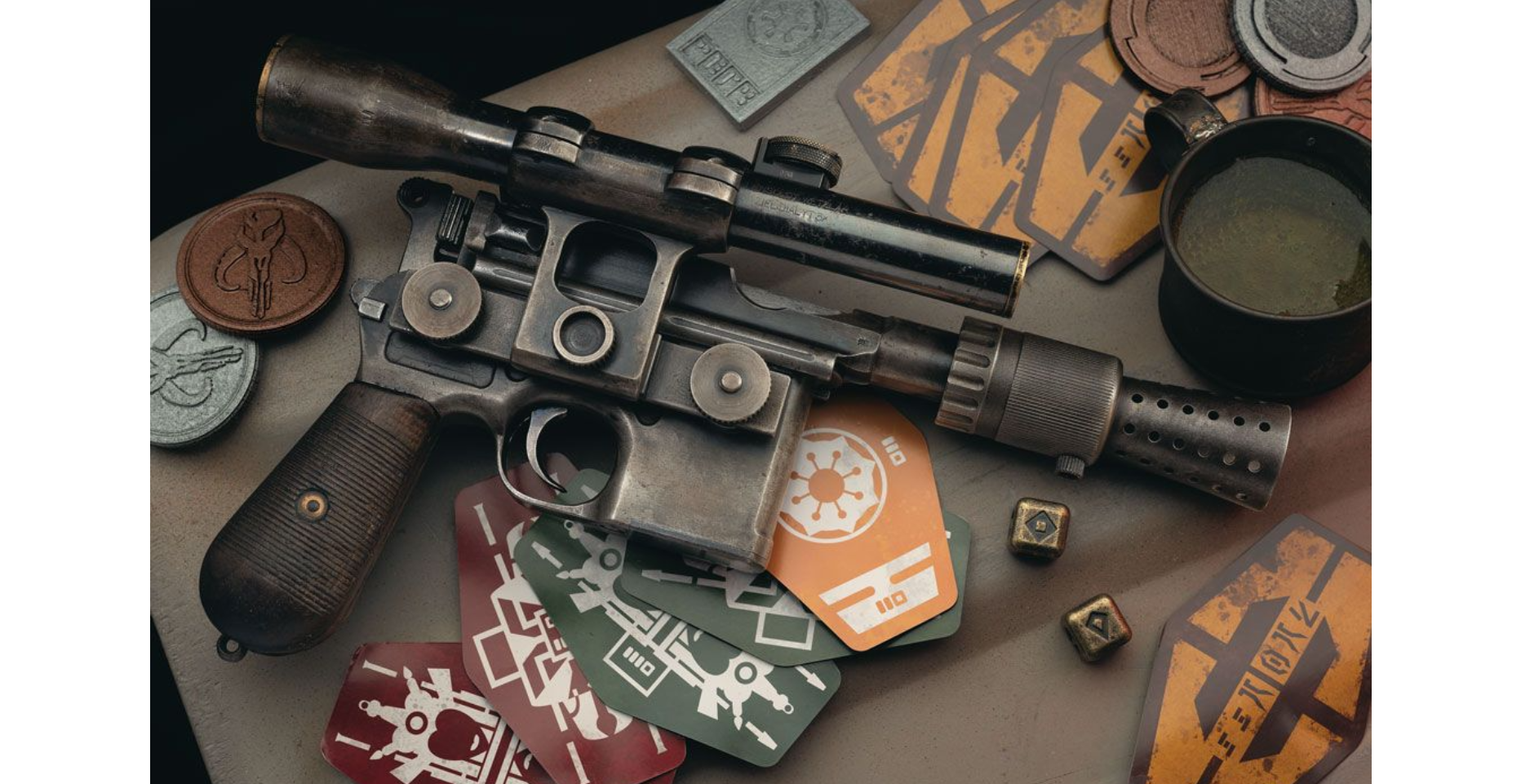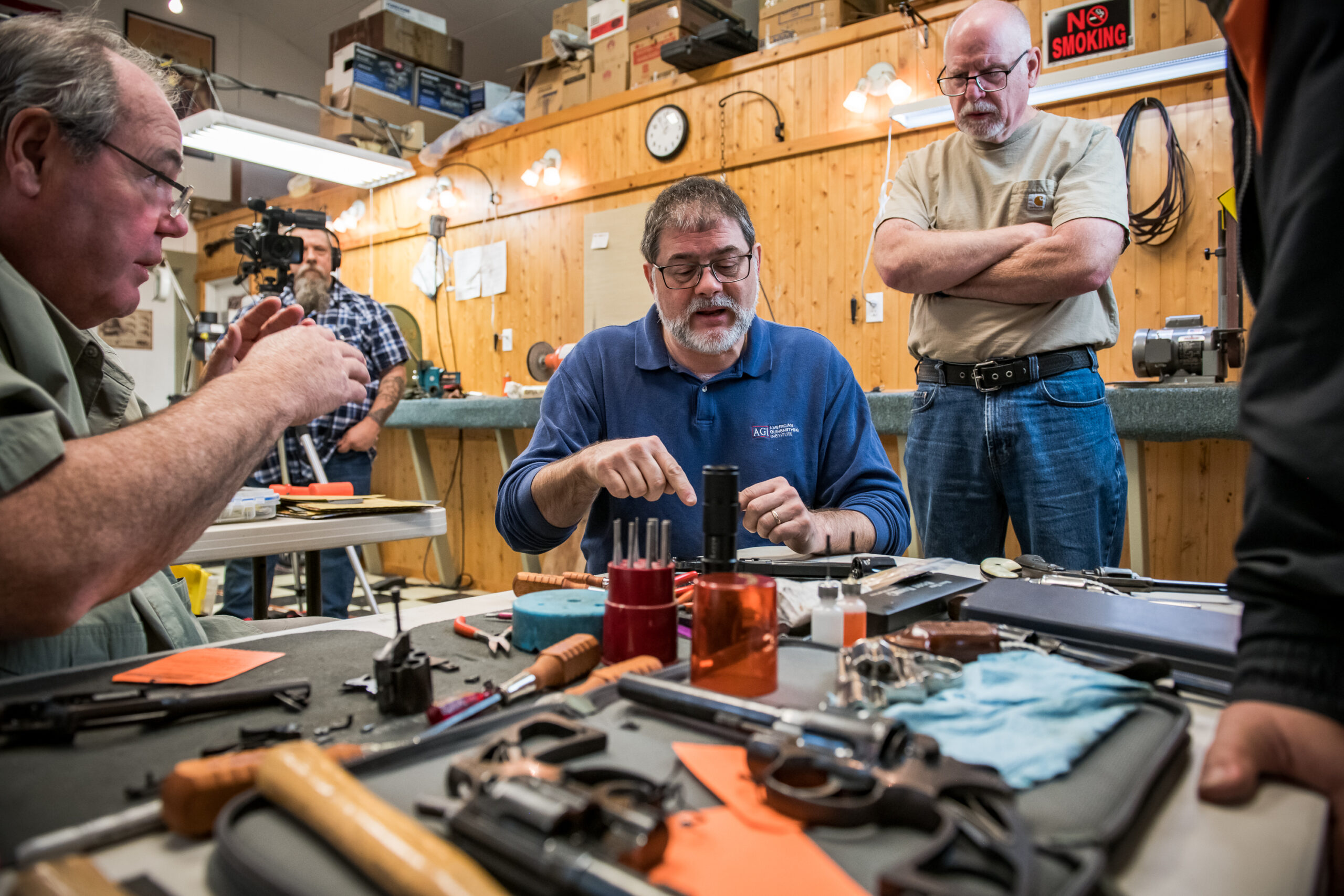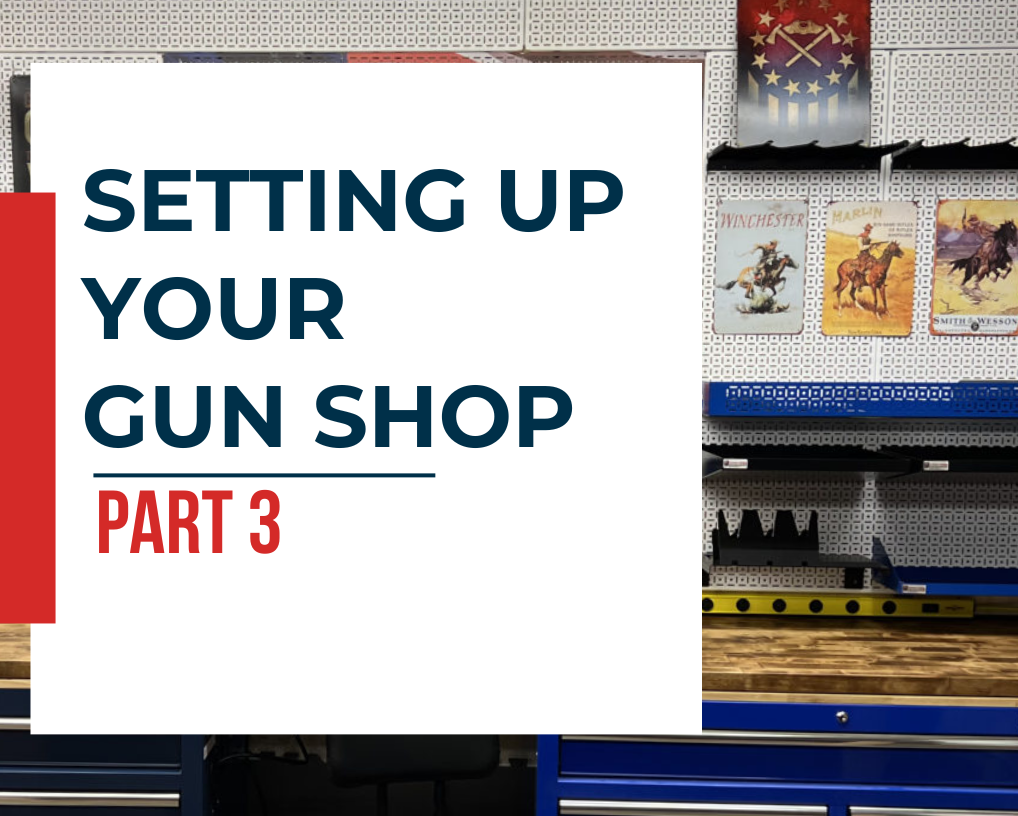I have worked on firearms on dining room tables, the floor, truck tailgates, shooting benches, countertops, and just about anywhere else you can think of over the last 40+ years of Gunsmithing.
But if you want to do it efficiently you need a good workbench and I want to share how to set yours up to be practical, comfortable, and efficient.
As you are doing Gunsmithing work you are moving the firearm around and reaching for tools, etc. The less you have to travel around a room to get what you need, the faster you can get your work done. First of all, a large percentage of your work will be done standing in front of the bench or seated on a stool.
For this first segment, we are just going to focus on setting up a comfortable workbench.
A critical feature of the bench is rigidity. To achieve that rigidity you’ll need a solid frame built from 4”x 4”s or doubled up 2” x 4”s or a similarly stable arrangement from other materials.
When you are having to apply force to a screw or knock out a pin, you do NOT want the gun bouncing around.
Once you have a rigid stable frame, the top of the bench should also be rock solid. One way to accomplish this is to use multiple layers of ½”, ¾”, or even 1” plywood. Glue and screw the sheets together.
When you decide on the height of the bench, consider that you want the bench higher than your waist, so you aren’t leaning over to work on guns and hurting your back. But you also want it just low enough so that you can “lean into” your screwdriver or other tools when breaking loose a stuck part.
A way to judge the correct height is to get a tape measure, then stand comfortably with your arms at your sides, then bring your hands up to 90 degrees with your elbows still at your sides and your palms down.
This is a little too high as you won’t be able to apply weight and leverage in this position. Lower your hands a couple of inches so that you can envision yourself being comfortable pressing on a part. Use the tape measure to measure the distance to the floor. That should be the height of the bench top.
When you are building your bench and are using multiple layers of plywood, you can test the height for comfort as you stack on each layer before securing them down and making it permanent. You can even work on it for a few days to get the right feel.
You will also want to cover the plywood or other surface in a flat industrial style non-plush carpet. Stretch it tight and staple it around the edges (don’t staple it to the top you don’t want the staples to scratch anything). I also recommend that you glue carpet down to the top of the bench as well.
Work with it to get what feels right for you. Long term, having a bench that fits you will provide comfort and that adds to efficiency.
To determine the depth of the countertop distance from the front edge to the back wall where your tools are hanging, standing straight and relaxed, extend your arm like you were reaching for a tool on the back wall. Then lean forward just a little at the waist. For me that is about 19” to 20” deep to the back wall.
Take into account that you will most likely have your tools hanging on peg board or on a rack and that will take up some depth. You can also purchase “Butcher Block” style countertops from hardware stores and big box outlets. They are often available about 20” wide, which would probably be perfect for most people.
The bench only needs to be about 4-foot long at a minimum (most long guns are shorter than 4’) but 6 feet or longer is better. In our shop we had benches running along both sides and one end of the building.
When you design the frame that holds the bench top, plan it so that the countertop overhangs at least 2” to 4” or more at the front so that you can stand or sit close to the bench top without banging your knees against the base or cabinet.
It is also a good idea to enclose the area under the bench top with cabinets or a smooth face. When you drop a part or a spring, (and you will!) you need to do the “Gunsmith Crawl”. It is hard to find parts that have landed on an open shelf that is full of boxes or other junk. Been there, done that! So having it enclosed or even with a sheet of plastic hanging down the front covering the shelves will save you some grief.
There is a good set of bench-building plans on the Gunsmithing Club of America (GCA) website created by AGI Instructor Mark Foster. If you are a GCA member you can access them there.
Now that you have your basic bench set up, in our next Efficient Workbench segment we will talk about what you need to put on it.
Building Freedom One Gun At A Time!
Gene Kelly,
Gunsmith and President
American Gunsmithing Institute








